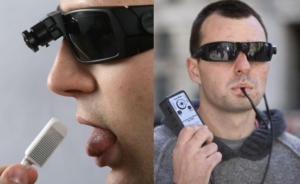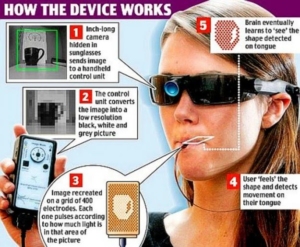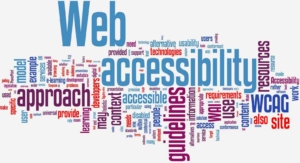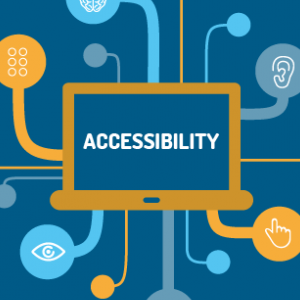 Example of the BrainPort V100 in use.
Example of the BrainPort V100 in use.
So, what’s the problem?
The rapid development of technology has surpassed what was only fantasy 20 years ago, with technological innovation improving more rapidly than accessibility is progressing. Tech companies boast imaginative products and services, but only for those who look, act, and represent the societal “norm.” So, instead of treating accessibility as a secondhand add-on, tech companies should be brave and change cultures in order to focus on accessibility.
Where there are problems…there are solutions!
While it takes more than just bravery to implement accessibility and universal design, the term is fitting because companies are afraid of accessibility challenges because they do not understand them. Technological advancements are important for accessibility, but they can only be implemented if companies understand enough about who their disabled customers are. Accessibility issues should be brought into the spotlight, with tech companies developing a set of guidelines that clearly define expectations in the marketplace. It would greatly benefit customers if companies considered accessibility during the early stages of product and service development, regularly promoting communication as a means to remove participatory barriers. By understanding customers and creating guidelines, companies can help bridge the growing gap between technology and accessibility.

Multiple accessibility entries of great importance have helped close this gap, but the longest running and most respected entry comes from the inclusive minds at the California State University, Northridge, Center on Disabilities (CSUN). Preceding the Rehabilitation Act of 1973, CSUN has been an active voice in communicating the importance of bravery in accommodating people with disabilities in all environments. CSUN conducts an annual university-sponsored conference (Assistive Technology Conference) that attracts nearly 5,000 participants, including presenters and exhibitors, who take part in teaching and learning about assistive technology on a larger scale. The conference actively communicates changing trends in data and technology so as to provide grounds for accessibility improvement.
Not only does this conference provide companies with hundreds of unique and necessary additions to their accessibility guidelines, expectations, and tools, but provide disabled customers with new ways to navigate, and as an extension, experience, a world so unlike their own.
Vision through taste, really?
From apps that audibly describe the surrounding environment for the visually impaired, to phones that provide cascading captions of conversations for the hearing-impaired, the conference utilizes everyday technology to improve the market for accessibility. Beyond this, however, lies more advanced products and services for disabled persons; two examples being a pen that vibrates at a specified counter-frequency to combat Parkinson’s tremors, and a wearable video camera that stimulates certain areas of a user’s tongue, training the mind to see images through taste. While all of these creations are impressive and necessary, they cannot be implemented unless companies are willing reach out to conferences or events such as the CSUN Assistive Technology Conference.
 Infographic of the BrainPort V100 detailing how it is used.
Infographic of the BrainPort V100 detailing how it is used.
CSUN is just one specific entity that is pushing tech companies towards the aforementioned bravery, but there’s only so much that they can do.
 Dopa Solutions’ pen that counters Parkinson’s tremors.
Dopa Solutions’ pen that counters Parkinson’s tremors.
So how can we ensure that products and services are usable for everyone?
By bringing accessibility into the spotlight. By creating guidelines and expectations for accessibility design. By helping tech companies bridge the gap between technology and accessibility, actively learning and executing inclusivity. The CSUN conference is just one example of the resources that tech companies can utilize in order to promote accessible design, with hundreds of others following suit. The resources are readily available, and the potential to merge both technology and accessibility harmoniously is there, but tech companies must first be brave enough combat the threshold of uncertainty.
Accessibility is NOT a barrier for technological innovation; it should be treated with equal respect and bravery.

